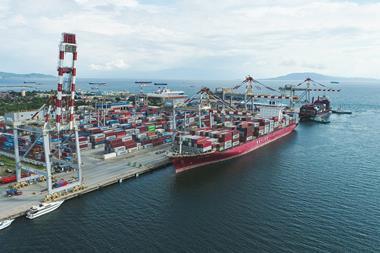
Revamped at last, after months of discussion, much to-ing and fro-ing between the parties involved, and some eleventh-hour tweaks – yes, the new-look print edition of Automotive Logistics is finally here. I do hope its arrival doesn’t overshadow that other thing that was redesigned recently – the free trade agreement which has governed business between the US, Canada and Mexico over the past 24 years. In the arc of global history, one is rather more important than the other, though I’m sure the new Nafta will have some impact.
In seriousness, developments in the North American Free Trade Agreement negotiations started to move so fast in September, after more than a year of talks, that it was difficult to keep pace with the story. On August 27, a deal was struck with Mexico, and at first it seemed this might leave Canada sitting on the sidelines. But then, on October 1, President Trump trumpeted an agreement with his northern neighbour, and the United States-Mexico-Canada Agreement (catchy name) was born.
In typical bombastic style, Trump described USMCA (little better) as “the biggest trade deal in the United States’ history” and “a great deal for all three countries [that] solves the many deficiencies and mistakes in Nafta”. His Canadian and Mexican counterparts publicly agreed that the development was positive, although Canada’s Prime Minister Trudeau admitted that compromises had been made.
So, what is this new deal governing $1 trillion of trade, and is it better than what went before?
For details of new content rules, exemptions, side letters and other complexities I will direct you to our in-depth feature. As for the full implications for vehicle-makers, tier suppliers and logistics service providers, these are still being worked out and we will be sure to update you as new developments occur, not least the results of the US Commerce Department’s Section 232 investigation into the ‘threat’ to national security posed by imports.
Meanwhile, peering into the future is an increasingly interesting exercise for automotive observers as the global industry undergoes massive transformation, in accordance with social, economic and technological trends. We have therefore recently produced a series of articles that present a vision of how automotive logistics could look over the coming decades.
One major feature examines the potential of hyperloop technology – a combination of magnetic levitation, ultra-low aerodynamic drag and low-pressure tubes – for reducing lead times, streamlining inventories and cutting costs in inbound logistics, and asks how soon automotive companies can expect to see the benefits. While an exciting technology, hyperloop represents the type of transformative change that requires significant investment, visionary thinking and the ability to push through large-scale infrastructure projects in the face of numerous obstacles; for this reason, the Gulf states, China and the US are tipped as favourites to deliver on the ‘hype’.
In addition, at our AL Global conference this September in Detroit, I learned what the ‘autonomous supply chain’ concept could mean for the automotive industry: machine learning and artificial intelligence enabling smart robots to respond to changing circumstances, while their human ‘babysitters’ tackle higher-level decisions. According to Srini Muthusrinivasan of JDA Software, who was interviewed by Autmotive Logistics at the conference, the adoption of this autonomous supply chain has already begun – and is accelerating rapidly.
Times are certainly changing and so have we at Automotive Logistics, although we haven’t yet installed robots that can write articles (perhaps luckily for human journalists). The new-look print magazine is clearer, more modern and packed with statistics, charts and maps to make the complex picture of today’s automotive logistics easier to take in; I do hope you enjoy it. Whether you will also enjoy the new-look Nafta, I don’t yet know – feel free to write in.

























![Global[1]](https://d3n5uof8vony13.cloudfront.net/Pictures/web/a/d/s/global1_726550.svgz)











No comments yet